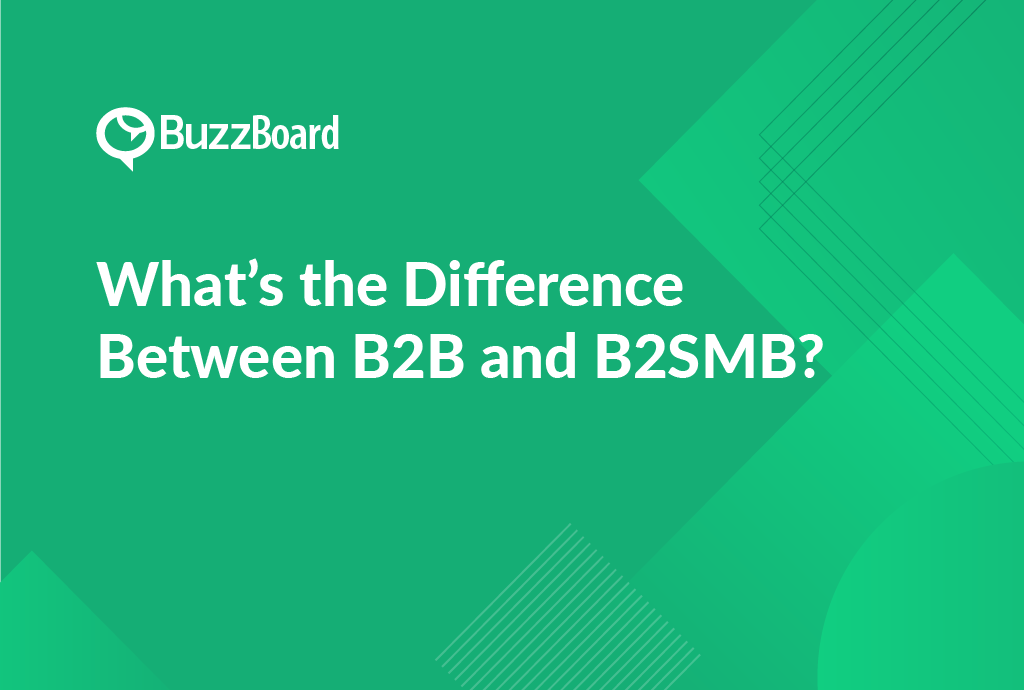In order to get a better hold of modern business relationships, understanding the distinctions between B2B and B2SMB is crucial for salespeople. This blog serves as a gateway into exploring the key distinctions between B2B and B2SMB, shedding light on their unique dynamics and implications. Read until the end for our compact briefing on the challenges B2SMB companies face when selling to small and local businesses and the tactics that drive success!
Defining B2B and B2SMB
1. B2B (Business to Business):
- Target Audience: B2B companies focus on selling products or services directly to other businesses.
- Scope: Transactions in B2B typically involve larger enterprises, corporations, or organizations.
- Approach: B2B transactions often require a strategic, consultative approach due to the complexity and scale of business operations.
2. B2SMB (Business to Business to Small Business):
- Target Audience: B2SMB companies specialize in selling to small or medium businesses.
- Scope: The emphasis is on engaging with smaller entities, often local businesses, rather than larger corporations.
- Approach: Selling to small businesses requires a more personalized, hands-on approach due to the unique challenges and needs of this market segment.
Differentiating B2SMB from B2B: Understanding the Nuances
While both B2B and B2SMB involve business-to-business transactions, the scale and dynamics vary significantly.
1. Customer Segment:
- B2B: Targets larger enterprises, corporations, and organizations with complex structures and operations.
- B2SMB: Focuses on small businesses, often with fewer employees and streamlined operations.
2. Transaction Size:
- B2B: Involves transactions with higher values, given the scale and scope of the operations of larger businesses.
- B2SMB: Transactions are often smaller in scale, reflecting the size and capacity of small or mid-sized businesses.
3. Decision-Making Processes:
- B2B: Decision-making in larger enterprises may involve multiple stakeholders and a more extended sales cycle.
- B2SMB: Decision-making in smaller businesses is often more agile, with fewer layers of approval.
4. Personal Touch and Alliance Forging:
- B2B: Requires a strategic and personalized approach, often involving long-term relationship building.
- B2SMB: Necessitates a more hands-on, personal touch due to the close-knit nature of small businesses.
What Are the Unique Challenges of B2SMB Companies
Selling to small and local businesses poses distinct challenges and opportunities for B2SMB companies:
1. Diverse Needs and Industries:
SMBs or small and medium businesses span various industries, each with unique needs. B2SMB companies must tailor their offerings to cater to this diversity.
2. Limited Resources:
Small and medium businesses often operate with limited resources, requiring cost-effective and efficient marketing solutions.
3. Local Focus:
The local nature of many small businesses demand B2SMB companies to understand and integrate local marketing strategies.
The Significance of Small Businesses in the U.S.
Understanding the importance of small businesses in the United States provides context for the role of B2SMB companies. According to recent data, there are over 33 million small businesses in the U.S., employing approximately 61.7 million Americans. This sector constitutes a substantial 46.4% of private sector employees, emphasizing the economic impact of small businesses (U.S. Small Business Administration).
Nurturing Relationships and Driving Success in B2SMB Sales
Here are some key strategies to enhance success in the B2SMB space:
Tailor your approach with a keen understanding of the unique needs of small businesses. Personalized solutions resonate more effectively.
2. Local Engagement:
Embrace local marketing strategies to align with the community-oriented nature of small businesses.
3. Cost-Effective Solutions:
Recognize the budget constraints of small businesses and offer cost-effective digital marketing solutions.
4. Agile Communication:
Adapt your communication style to the more agile decision-making processes of small businesses.
As we conclude our exploration into these two realms, it becomes evident that while they share similarities, they also possess unique characteristics that shape their dynamics. Whether it’s fostering long-term partnerships or building authentic relationships with SMBs, the insights gained from understanding these distinctions, hopefully, will help you tailor your business strategies, messaging, and approaches to effectively engage with target audiences. Remember, armed with this knowledge, your business is better equipped to thrive in a constantly developing business landscape.







